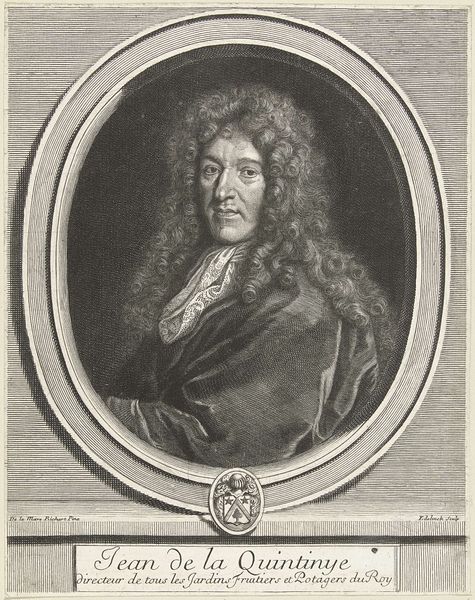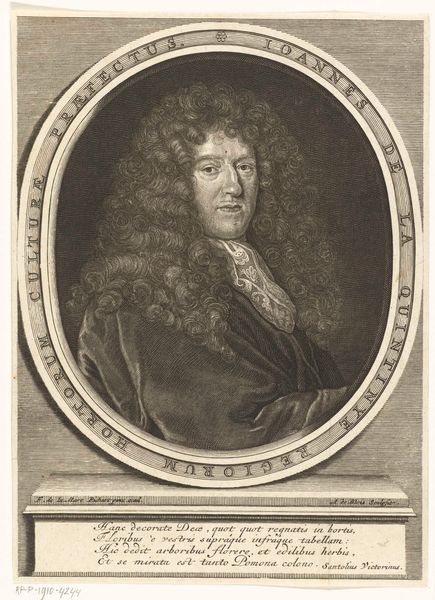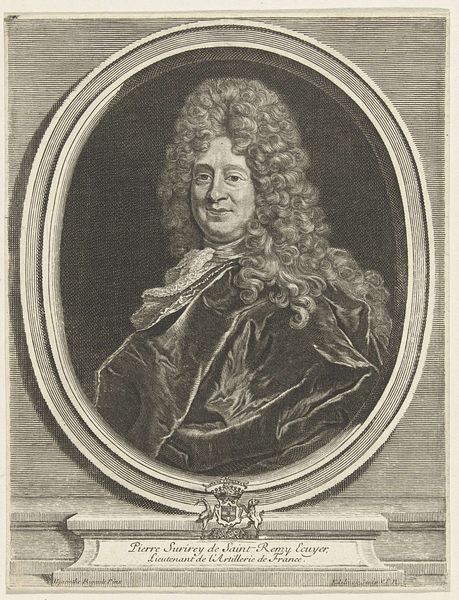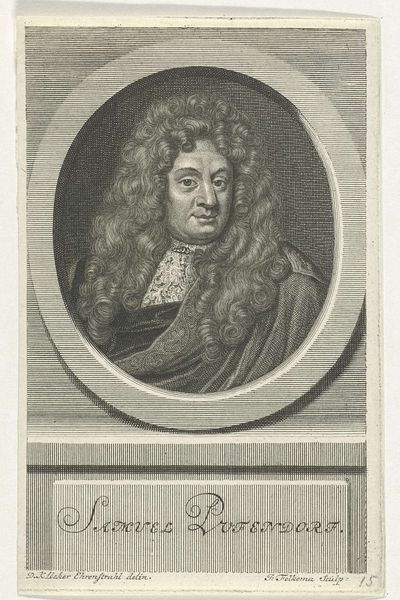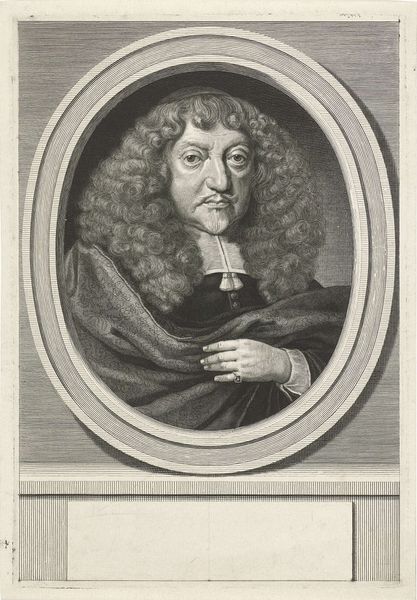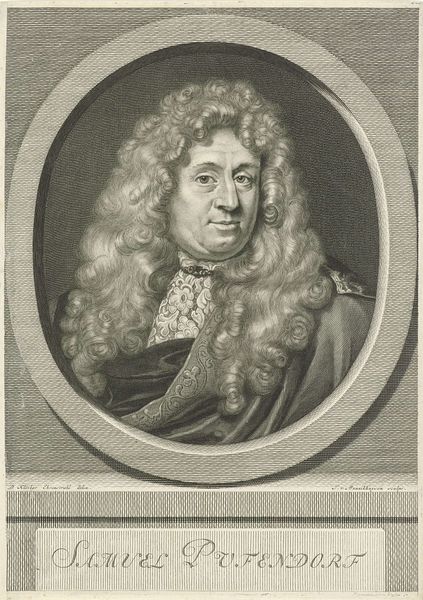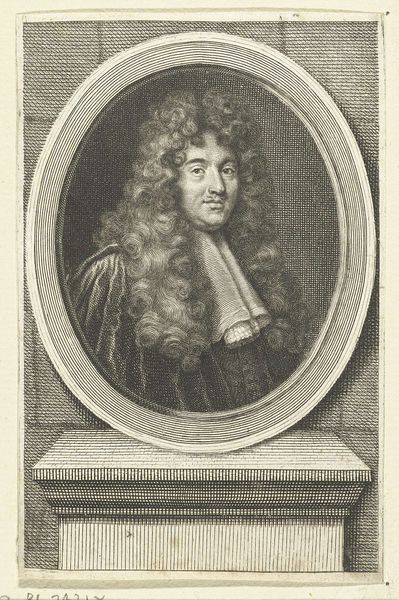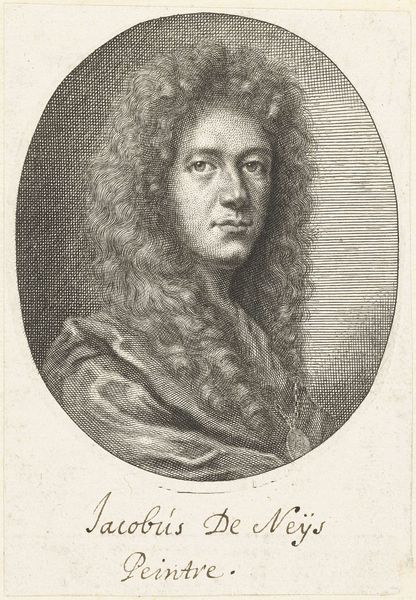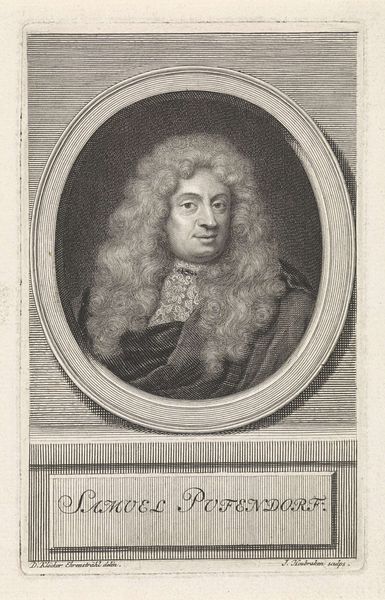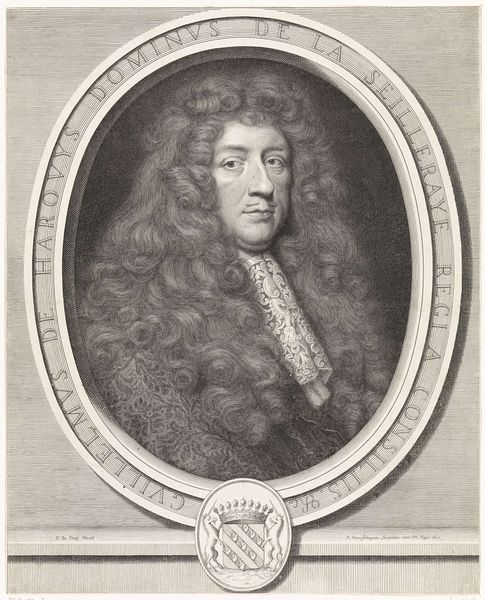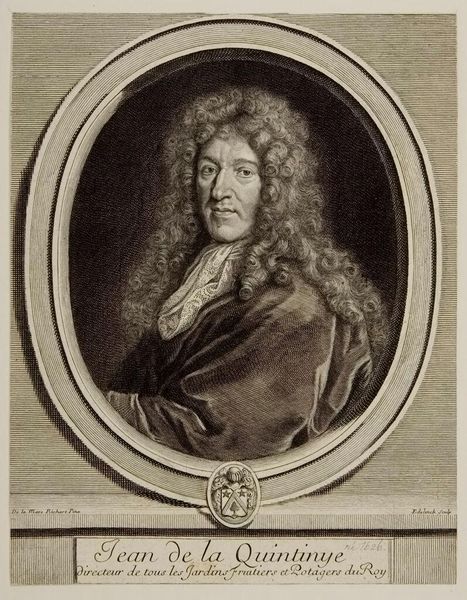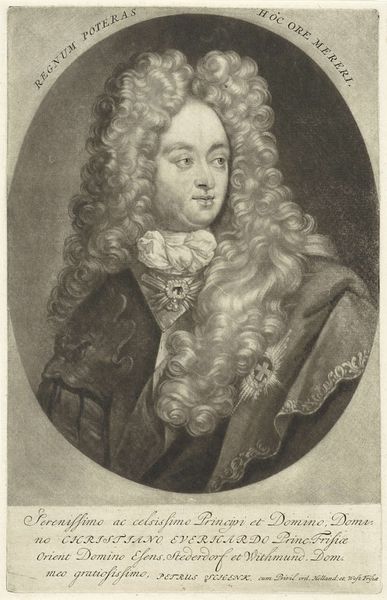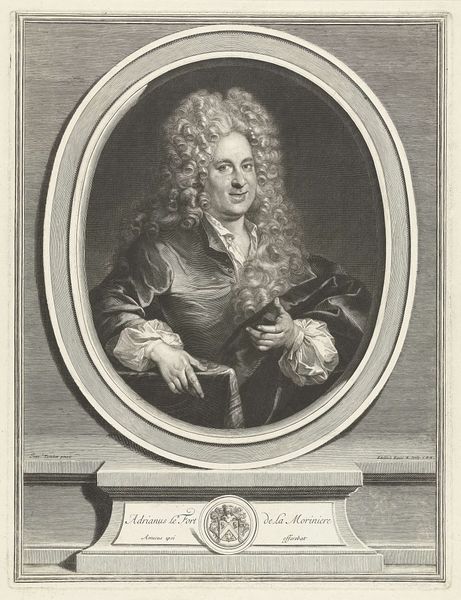
engraving
#
portrait
#
baroque
#
old engraving style
#
charcoal drawing
#
historical photography
#
engraving
Dimensions: height 189 mm, width 144 mm
Copyright: Rijks Museum: Open Domain
Curator: This is a rather striking engraving from between 1677 and 1721 by Jan van Munnickhuysen. It's titled "Portret van Hermanus Neuspitzer" and it currently resides here at the Rijksmuseum. Editor: Oh, what a face! He looks like he’s just heard a hilarious secret but isn’t allowed to laugh. A secret involving…powdered wigs, perhaps? It's got a delicate feel overall despite his presence. Curator: I agree about the delicate feel; the intricate detail is achievable because it is an engraving, of course. Notice how the line work describes not only the subject’s likeness but also evokes textures, from the curls of his wig to the sheen on his garment. The labour involved is incredible, creating all those delicate cross-hatching lines. Editor: Right? The patience! I get anxious trying to draw a straight line, let alone conjure all that hair out of thin air, one tiny stroke at a time! You really feel the artist's presence in that meticulousness. I wonder what paper was used and whether the choice of materials influenced how easy the artwork was to achieve? Curator: Paper in this period was largely made from cotton or linen rags. Different rag qualities would definitely influence the end result in terms of the ability to transfer the ink in a clean, unblurred line, and influencing the quality of the final print that reaches a wide audience. Editor: And beyond that audience, I'm curious about the story *behind* this Hermanus fellow. He seems very self-satisfied and a little bit knowing, in the expression he’s chosen. Is there something of Hermanus's character that makes you want to linger? Curator: Without further historical data we could only speculate on the model's intentions but we can consider the status of portraiture at this time and the kind of clientele who purchased the finished engraving. This image would probably have served to validate his status within society, perhaps a wealthy merchant or scholar. Editor: Hmm, the thought that so many of these portraits could tell stories of status and privilege. It does prompt thoughts about accessibility to visual representation and who gets remembered. Still, it's a finely wrought portrait. Curator: It gives insight to the materials, skill, and labour that went into producing it. It also allows us to understand how production methods reflect the social role of art. Editor: I love finding the magic within those traces of the hand—the touch and humanity that survive even through the most deliberate of processes.
Comments
No comments
Be the first to comment and join the conversation on the ultimate creative platform.
